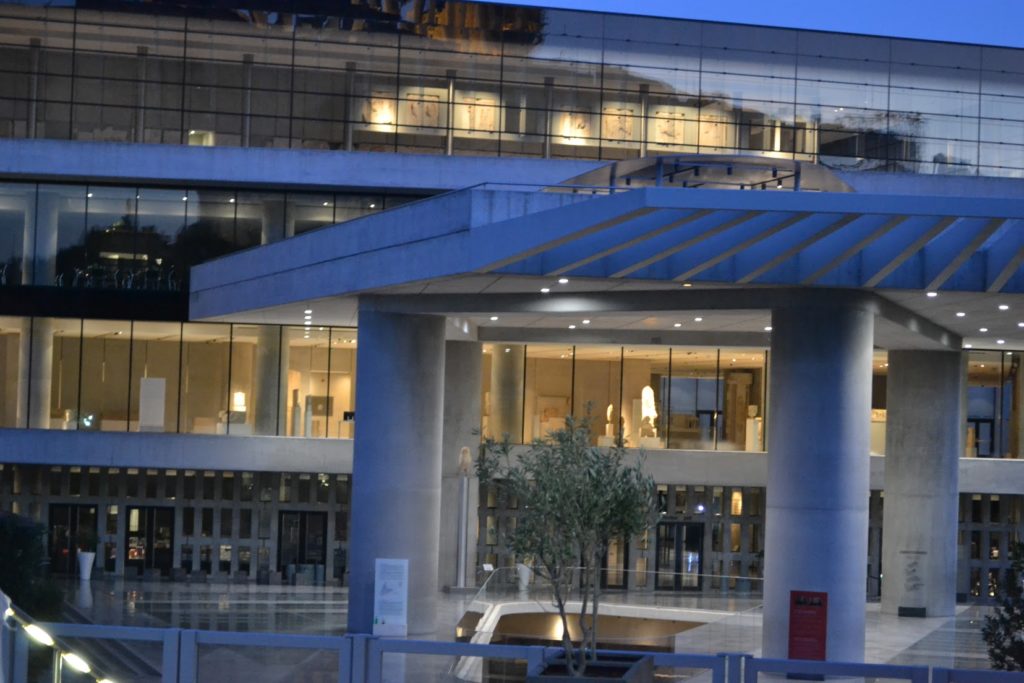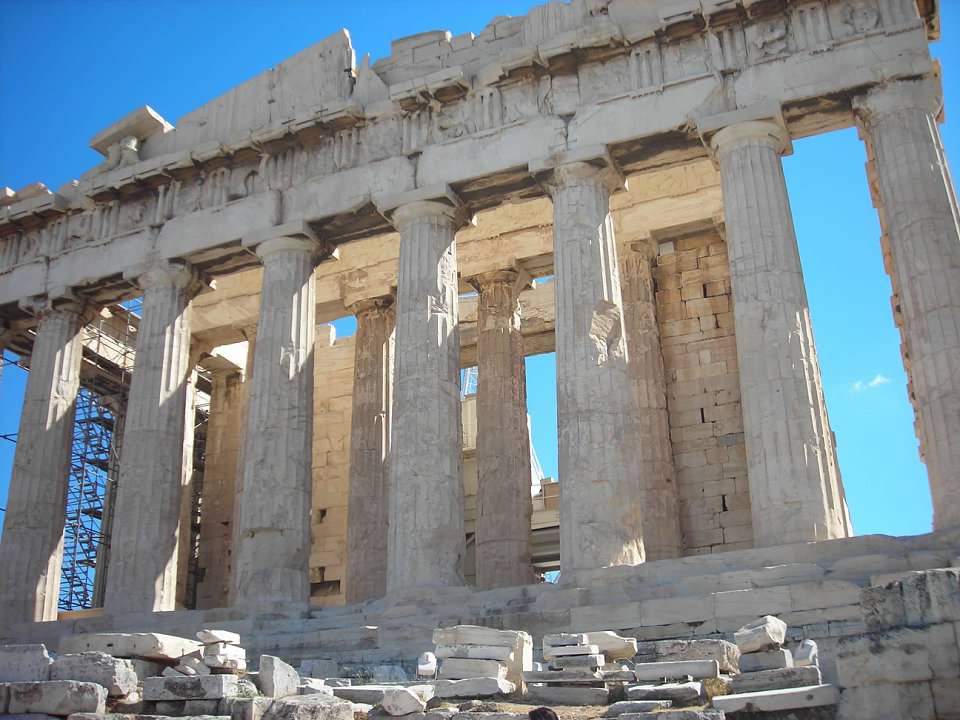
Today marks the 10th anniversary of the opening of the Acropolis Museum in Athens, Greece. The breathtaking museum was created to house every artifact found on the Acropolis and on the surrounding slopes, and it lies over the ruins of a part of Roman and early Byzantine Athens. The building was created to replace the former museum, in part to persuade the British Museum to return the Parthenon Marbles to Greece.
The Acropolis Museum is a truly impressive institution for many reasons, one being that many of the rooms of the museum afford views of the Acropolis. Incredibly, the dimensions of the Parthenon were incorporated into the museum’s structure. The top floor has the same cardinal orientation of the ancient temple on the Acropolis. The spacing of the columns of the Parthenon Hall is identical to the ancient temple, and the use of glass walls on all four exterior walls allows natural light to cascade over the Parthenon marbles as they do on the ancient temple. The 48 columns in the Parthenon Hall mark the outline of the ancient temple and form a colonnade for the long-awaited display of the relocated marbles.
Viewing artifacts from ancient Athens is incredible in the “New” Acropolis Museum (the name used for the museum when it was first opened a decade ago). However, even viewing the Parthenon Marbles in the original Acropolis Museum was incredible because Athens is their home. When I visited Greece for the first time (in 2006), I was enthralled. While in law school, I had read about the repatriation demands for the Parthenon Marbles, and I felt that the marbles ruthlessly hacked off the Acropolis should be returned to Greece. This fight is one of the reasons why I am an art and cultural heritage attorney. Reading about the debate convinced me that the Parthenon Marbles should be returned to their rightful home in Greece.

The debate concerning the return of the Parthenon Marbles from the British Museum to Greece is perhaps the most famous controversy over repatriation. The debate is a complex one that involves both legal and ethical considerations. The British Museum hides behind the assertion that the statute of limitations has expired for making a demand (although there was no international court in which to demand repatriation). The British institution also puts forth an emotionally charged argument that returning the marbles to Greece would lead to wide-scale returns that would tragically empty the world’s great encyclopedic museums. Neither of these arguments are valid: the passage of time is no excuse to hold these marbles captive; and the fear of returning stolen items to their homes does not justify their continued presence in London.
I had an opinion about the Parthenon Marbles prior to visiting Greece- the objects should be returned to Athens. However, visiting the Mediterranean nation reinforced my view. I became passionate about the return of the marbles after walking up the slopes of Athens to the Acropolis, viewing the marbles at the former museum, and then at the state-of-the-art Acropolis Museum with views of the most important site of Ancient Athens and perhaps the best known temple in the world.
Sadly, the marbles displayed in the British Museum can never be presented in the same dynamic context as in the Acropolis Museum. The Parthenon Marbles are now thousands of miles away from home, housed in a generic museum room, without a single window. The marbles are divorced from any of their original context while in London.
The Parthenon Marbles are not merely remnants of the past, but they are symbols of Ancient Athens and the modern nation of the Hellenic Republic. Amineddoleh & Associates LLC has the honor of representing the Greek Ministry of Culture in a pending litigation concerning a Corinthian bronze. And I personally have had the honor or presenting arguments in favor of the Marbles’ repatriation in various news outlets and conferences, either as a writer, participant or contributor. For links to some of these discussions, and for additional information about the Acropolis Museum, please visit the following: Forbes editorial, NY Times editorial, Hyperallergic editorial, Third Colloquy on the Return of the Parthenon Sculptures, and this blog.
Leila A. Amineddoleh